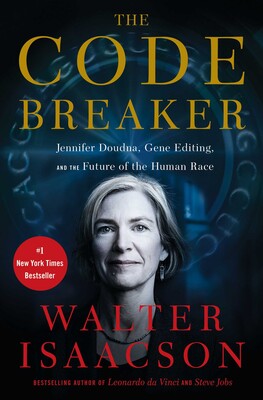We Haven’t Really Cracked the Code of Life
By Jag Bhalla,
Issues in Science and Technology
| 09. 01. 2021
To say that scientists now understand life’s “code” is a stretch. So, from the very title of Walter Isaacson’s latest biography, The Code Breaker: Jennifer Doudna, Gene Editing, and the Future of the Human Race, he’s off to a rocky start. And that isn’t the only conceptual gap papered over by this beautifully built behemoth. To suggest that Doudna is a “code breaker” is to compare her to, say, the British code breakers of World War II who cracked the notorious German Enigma code. But when it comes to DNA, our code breaking isn’t all it’s cracked up to be: if the Allies had had the same level of expertise in actual cryptology that scientists now have with DNA, they might well have lost World War II.
The Code Breaker contains 481 pages of Oscar-level cinematic prose, providing a whistle-stop tour of how Jennifer Doudna, a biochemist at the University of California, Berkeley, and a large supporting cast discovered and developed the gene-editing technology known as CRISPR—an acronym for clustered regularly interspaced short palindromic repeats. These repeating DNA features...
Related Articles
By Pam Belluck and Carl Zimmer, The New York Times | 11.19.2025
Gene-editing therapies offer great hope for treating rare diseases, but they face big hurdles: the tremendous time and resources involved in devising a treatment that might only apply to a small number of patients.
A study published on Wednesday...
By Emily Glazer, Katherine Long, Amy Dockser Marcus, The Wall Street Journal | 11.08.2025
For months, a small company in San Francisco has been pursuing a secretive project: the birth of a genetically engineered baby.
Backed by OpenAI chief executive Sam Altman and his husband, along with Coinbase co-founder and CEO Brian Armstrong, the startup—called...
By Jessica Hamzelou, MIT Technology Review | 11.07.2025
This week, we heard that Tom Brady had his dog cloned. The former quarterback revealed that his Junie is actually a clone of Lua, a pit bull mix that died in 2023.
Brady’s announcement follows those of celebrities like Paris...
By Emily Mullin, Wired | 10.30.2025
In 2018, Chinese scientist He Jiankui shocked the world when he revealed that he had created the first gene-edited babies. Using Crispr, he tweaked the genes of three human embryos in an attempt to make them immune to HIV and...




